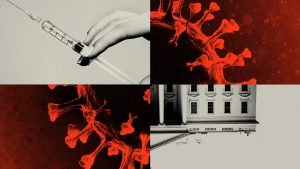Harvard Business Review
Mindful, Selfless, and Compassionate
June 5, 2021Harvard Business Review
Andreas Rentz/Getty Images
Summary.
The Dalai Lama shares his observations on leadership and describes how our “strong focus on material development and accumulating wealth has led us to neglect our basic human need for kindness and care.” He offers leaders three recommendations. First, to be mindful: “When we’re under the sway of anger or attachment, we’re limited in our ability to take a full and realistic view of the situation.” Also, to be selfless: “Once you have a genuine sense of concern for others, there’s no room for cheating, bullying, or exploitation; instead you can be honest, truthful, and transparent in your conduct.” And finally, to be compassionate: “When the mind is compassionate, it is calm and we’re able to use our sense of reason practically, realistically, and with determination.”
by the Dalai Lama with Rasmus Hougaard
What can leaders do?
Be mindful
Cultivate peace of mind. As human beings, we have a remarkable intelligence that allows us to analyze and plan for the future. We have language that enables us to communicate what we have understood to others. Since destructive emotions like anger and attachment cloud our ability to use our intelligence clearly, we need to tackle them.
Fear and anxiety easily give way to anger and violence. The opposite of fear is trust, which, related to warmheartedness, boosts our self-confidence. Compassion also reduces fear, reflecting as it does a concern for others’ well-being. This, not money and power, is what really attracts friends. When we’re under the sway of anger or attachment, we’re limited in our ability to take a full and realistic view of the situation. When the mind is compassionate, it is calm and we’re able to use our sense of reason practically, realistically, and with determination.
Be selfless
We are naturally driven by self-interest; it’s necessary to survive. But we need wise self-interest that is generous and cooperative, taking others’ interests into account. Cooperation comes from friendship, friendship comes from trust, and trust comes from kindheartedness. Once you have a genuine sense of concern for others, there’s no room for cheating, bullying, or exploitation; instead, you can be honest, truthful, and transparent in your conduct.
Be compassionate
The ultimate source of a happy life is warmheartedness. Even animals display some sense of compassion. When it comes to human beings, compassion can be combined with intelligence. Through the application of reason, compassion can be extended to all 7 billion human beings. Destructive emotions are related to ignorance, while compassion is a constructive emotion related to intelligence. Consequently, it can be taught and learned.
Buddhist tradition describes three styles of compassionate leadership: the trailblazer, who leads from the front, takes risks, and sets an example; the ferryman, who accompanies those in his care and shapes the ups and downs of the crossing; and the shepherd, who sees every one of his flock into safety before himself. Three styles, three approaches, but what they have in common is an all-encompassing concern for the welfare of those they lead.”
Full piece:
Endarkment
March 27, 2020“One does not become enlightened by imagining figures of light,” Carl Jung wrote, “but by making the darkness conscious.” Reading this, I realize that in a whole lifetime spent with seekers of enlightenment, I have never once heard anyone speak in hushed tones about the value of endarkenment. -Barbara Taylor Brown, author & Episcopal priest
And so even now, as light gives way to darkness, I know that once again light is born from darkness. Those who read out to help strangers are living out the oneness that is part of our spiritual DNA. -Science of Mind
What are we only now coming “to know” through this time of not-knowing?
Either we will love and help one another or we will hate and attack one another, in which latter case we will all be one another’s hell. Perhaps Sartre was not far wrong in saying that where freedom is abused, society itself turns into heel.. (L’enfer c’est les autres.”) -Thomas Merton
Yuval Noah Harari: the world after coronavirus
This storm will pass. But the choices we make now could change our lives for years to come.
Humankind is now facing a global crisis. Perhaps the biggest crisis of our generation. The decisions people and governments take in the next few weeks will probably shape the world for years to come. They will shape not just our healthcare systems but also our economy, politics and culture. We must act quickly and decisively. We should also take into account the long-term consequences of our actions. When choosing between alternatives, we should ask ourselves not only how to overcome the immediate threat, but also what kind of world we will inhabit once the storm passes. Yes, the storm will pass, humankind will survive, most of us will still be alive — but we will inhabit a different world.
Many short-term emergency measures will become a fixture of life. That is the nature of emergencies. They fast-forward historical processes. Decisions that in normal times could take years of deliberation are passed in a matter of hours. Immature and even dangerous technologies are pressed into service, because the risks of doing nothing are bigger. Entire countries serve as guinea-pigs in large-scale social experiments. What happens when everybody works from home and communicates only at a distance? What happens when entire schools and universities go online? In normal times, governments, businesses and educational boards would never agree to conduct such experiments. But these aren’t normal times.
The coronavirus epidemic is thus a major test of citizenship. In the days ahead, each one of us should choose to trust scientific data and healthcare experts over unfounded conspiracy theories and self-serving politicians. If we fail to make the right choice, we might find ourselves signing away our most precious freedoms, thinking that this is the only way to safeguard our health.
[full read]
https://www.ft.com/content/19d90308-6858-11ea-a3c9-1fe6fedcca75
How the Pandemic Will End
The U.S. may end up with the worst COVID-19 outbreak in the industrialized world. This is how it’s going to play out.
Story by Ed Yong
The testing fiasco was the original sin of America’s pandemic failure, the single flaw that undermined every other countermeasure. If the country could have accurately tracked the spread of the virus, hospitals could have executed their pandemic plans, girding themselves by allocating treatment rooms, ordering extra supplies, tagging in personnel, or assigning specific facilities to deal with COVID-19 cases. None of that happened. Instead, a health-care system that already runs close to full capacity, and that was already challenged by a severe flu season, was suddenly faced with a virus that had been left to spread, untracked, through communities around the country. Overstretched hospitals became overwhelmed. Basic protective equipment, such as masks, gowns, and gloves, began to run out. Beds will soon follow, as will the ventilators that provide oxygen to patients whose lungs are besieged by the virus.
The White House is a ghost town of scientific expertise. A pandemic-preparedness office that was part of the National Security Council was dissolved in 2018. On January 28, Luciana Borio, who was part of that team, urged the government to “act now to prevent an American epidemic,” and specifically to work with the private sector to develop fast, easy diagnostic tests. But with the office shuttered, those warnings were published in The Wall Street Journal, rather than spoken into the president’s ear. Instead of springing into action, America sat idle.
After 9/11, the world focused on counterterrorism. After COVID-19, attention may shift to public health. Expect to see a spike in funding for virology and vaccinology, a surge in students applying to public-health programs, and more domestic production of medical supplies. Expect pandemics to top the agenda at the United Nations General Assembly. Anthony Fauci is now a household name. “Regular people who think easily about what a policewoman or firefighter does finally get what an epidemiologist does,” says Monica Schoch-Spana, a medical anthropologist at the Johns Hopkins Center for Health Security.
The lessons that America draws from this experience are hard to predict, especially at a time when online algorithms and partisan broadcasters only serve news that aligns with their audience’s preconceptions. Such dynamics will be pivotal in the coming months, says Ilan Goldenberg, a foreign-policy expert at the Center for a New American Security. “The transitions after World War II or 9/11 were not about a bunch of new ideas,” he says. “The ideas are out there, but the debates will be more acute over the next few months because of the fluidity of the moment and willingness of the American public to accept big, massive changes.”
[full read]
https://www.theatlantic.com/health/archive/2020/03/how-will-coronavirus-end/608719/
7 Resources for Reliable Information About Coronavirus
1. The World Health Organization
The World Health Organization (WHO) is publishing rolling updates on the coronavirus situation as well as useful infographics and explainers, and should be your first port of call for new assessments of what is going on.
The WHO has also got a really handy page on common coronavirus myths — covering everything from whether eating garlic or taking a bath can help prevent you catching it (they can’t), to discussion about what age people are most susceptible.
2. The National Health Service
The UK’s NHS is another excellent resource. It includes easy to understand advice about symptoms, and what to do if you think you have them.
It also gives details of how and under which circumstances you need to self-isolate, and for how long, and on how to get a self-isolation medical advice note to get to your employer.
3. The BBC Coronavirus Podcast
The British Broadcasting Corporation (BBC) has launched a Coronavirus Global Update podcast, which includes a daily round-up on the spread of coronavirus.
It also includes reports from affected areas, details of the latest medical information, and the impact on health, business, and travel.
4. COVID-19 Facts
The COVID-19 Facts website works to collate information from sources including the London School of Hygiene and Tropical Medicine, the World Health Organization, and the Economist Intelligence Unit.
It also features a series covering myths around coronavirus, including analysis by the Economist Intelligence Unit of where the myth came from, and what experts say about it.
5. The New Scientist Podcast
The New Scientist podcast is becoming increasingly focused on COVID-19 — including episodes and pandemic preparations; the spread of COVID-19 and the importance of hand washing; the coronavirus vaccine; and a coronavirus special on disaster preparation and environmental change.
6. The Bill & Melinda Gates Foundation
The content platform of the Bill & Melinda Gates Foundation, the Optimist, is sharing stories, research, and news stories about coronavirus from the Foundation.
The platform works to convene expert voices from across the global health sector, including sharing expert perspectives and updates on the response to COVID-19 — and you can also sign up for the Optimist’s news digest.
7. The London School of Hygiene and Tropical Medicine
The LSHTM launched its new podcastLSHTM Viral in January 2020, in response to the outbreak of COVID-19, and is releasing a new episode every week. It specifically focuses on the science behind outbreaks and how we respond to them.
Meanwhile, the LSHTM is also launching an online short course, for those who want to better understand the emergence of COVID-19, and how we respond to it moving forward.
The free-of-charge course launches on March 23, and will cover topics like: how COVID-19 emerged and was identified; public health measures worldwide; and what’s needed to address COVID-19 in the future.
Given that everything is going to be the way it’s going to be, we’re left with an actually useful and productive question instead: “What are you going to do about it?”
-Seth Godin
Anticipatory grief.
Stocking up on compassion.
Name it.
That Discomfort You’re Feeling Is Grief
Harvard Business Review
Anticipatory grief is the mind going to the future and imagining the worst. To calm yourself, you want to come into the present.
Finally, it’s a good time to stock up on compassion. Everyone will have different levels of fear and grief and it manifests in different ways. A coworker got very snippy with me the other day and I thought, That’s not like this person; that’s how they’re dealing with this. I’m seeing their fear and anxiety. So be patient. Think about who someone usually is and not who they seem to be in this moment.
When you name it, you feel it and it moves through you. Emotions need motion. It’s important we acknowledge what we go through.
It’s absurd to think we shouldn’t feel grief right now. Let yourself feel the grief and keep going.
https://hbr.org/2020/03/that-discomfort-youre-feeling-is-grief
The Age of Loneliness.
September 19, 2015Harvard Business Review
“Loneliness is a feeling we’d all like to avoid. Research shows it’s terrible for our health; it diminishes cognitive performance and the immune system, increases the risk of heart disease and dementia and hastens early death. And the psychological effects are just as bad; studies show that people need strong social connections to feel happy and find meaning in their lives, and that many of us would actually rather receive mild electroshocks than be alone.
One might think that technological connectivity has or will soon save us from the blight of loneliness. But it seems that we feel more isolated today than ever. According to a report in The Atlantic, one in four Americans reports having no one with whom they can discuss important matters, compared with one in ten 30 years ago, and a 2013 survey conducted by Lifeboat found that the average American had only one real friend. The Guardian newspaper says we may have entered the “age of loneliness.”
6 possibilities for connectivity at work:
1. Walk your talk. In Nilofer Merchant’s TED Talk “Got a meeting? Take a walk,” she notes: “Nowadays, people are sitting 9.3 hours a day… Sitting has become the smoking of our generation.” Her solution to this health crisis is walking meetings, and I think they can help solve the loneliness epidemic too. When you get out of the office and get some exercise with a colleagues, you’ll immediately feel closer to them, particularly if the walk is one-on-one. You’ll also be more productive and innovative together. Neuroscientist John Medina, the author of Brain Rules says that 1.8 miles per hour is the the most productive meeting pace, while a recent Stanford study indicated that people were 60% more creative while walking. At design firm NBBJ, employees have taken these findings to heart. Instead of sit-down meetings with traditional agendas, they now have “meeting walks” complete with “itineraries.”
2. Play roulette. The idea of lunch roulette isn’t new but it remains a useful way to gain perspective by leaving one’s comfort zone, if only for a quick meal. After you’ve broken bread with a co-worker, it’s hard not to say hello in the hallway, and eventually the new relationship might turn into a fruitful collaboration. Companies may choose to match up employees randomly, or encourage people to seek out their own lunch dates. And there are apps to help: Spark Collaboration, a start-up in New York born out of the Randomised Coffee Trails (RCT) in the UK, just won the inaugural North American Employee Engagement Award for its platform that “brings people together by connecting them with people they would not normally meet.”
3. Instigate surprises. Surprises create the most authentic, intimate emotions because they catch us off guard. Companies such as Surprise Industries — founded on the idea that “life is richest when we shake up routine and embrace surprise”—offer tips, experiments, and even a “Surprise Academy” that teaches participants how to introduce more surprise into their lives. And the practice is gaining traction in the business world: Etsy, for example, runs a “Ministry of Unusual Business,” a secret society of employees tasked with injecting delightful surprises into everyday work.
4. Seek “thick presence.” Priya Parker, founder of Thrive Labs, and her author husband, the writer Anand Ghiridharadas, have a tradition they call “I Am Here” days. They invite about a dozen friends to put their smartphones away and spend a day exploring a part of New York City with them. The idea is to allow people to be “thickly present” rather than thinly distributed. Imagine applying this concept at work — instead of committing to a one-hour meeting to move forward on a project or provide an update, why not spend a full unscheduled day with colleagues working on that and anything else that comes up?
5. Host a dinner for 15. I co-founded a series of dinners called 15 Toasts with Parker and the World Economic Forum’s Council on Values, on which we both serve. These occasional gatherings, often held on the eve of Forum summits, bring together 15 global business leaders in intimate settings to discuss important issues. Each guest must provide one toast to the night’s theme (for example, “15 Toasts to Happiness” or “15 Toasts to Escapes”) over the course of the evening, and, as a special twist, the one who contributes last must perform his or her toast in song. “It’s the first dinner I’ve ever been to where I went in not knowing anyone and came out feeling connected with every single person,” the CEO of a Fortune 500 company told us after one such dinner. At the next day’s conference, he even hugged everyone he had met the night before. Team lunches or dinners can be spiced up in the same manner. Make the practice more regular, invite colleagues from outside your group or division and pick a specific topic for discussion.
6. Touch touchy issues. The inspiration for this advice comes from another dinner series Let’s Have Dinner and Talk About Death, which is based on the notion that talking about death typically leads to talking about life, including what makes us happy and what, if anything, we need to change about ourselves or our situations. The organizers say their goal is to create “an uplifting interactive adventure that transforms this seemingly difficult conversation into one of deep engagement, insight, and empowerment.” Addressing such heavy topics at work might seem like too much of a stretch, but consider getting your group together to talk about the “death” of a project, either mourning for one that got killed or one that simply ended and left people with a sense of loss.
People crave connection and intimacy in all realms of their lives, including at work. It’s a critical source of empathy and tolerance — the glue that keeps relationships, projects, and organizations together. Leaders should do more to encourage it.”
Harvard Business Review
April 15, 2015What Peter Drucker Knew about 2020…





